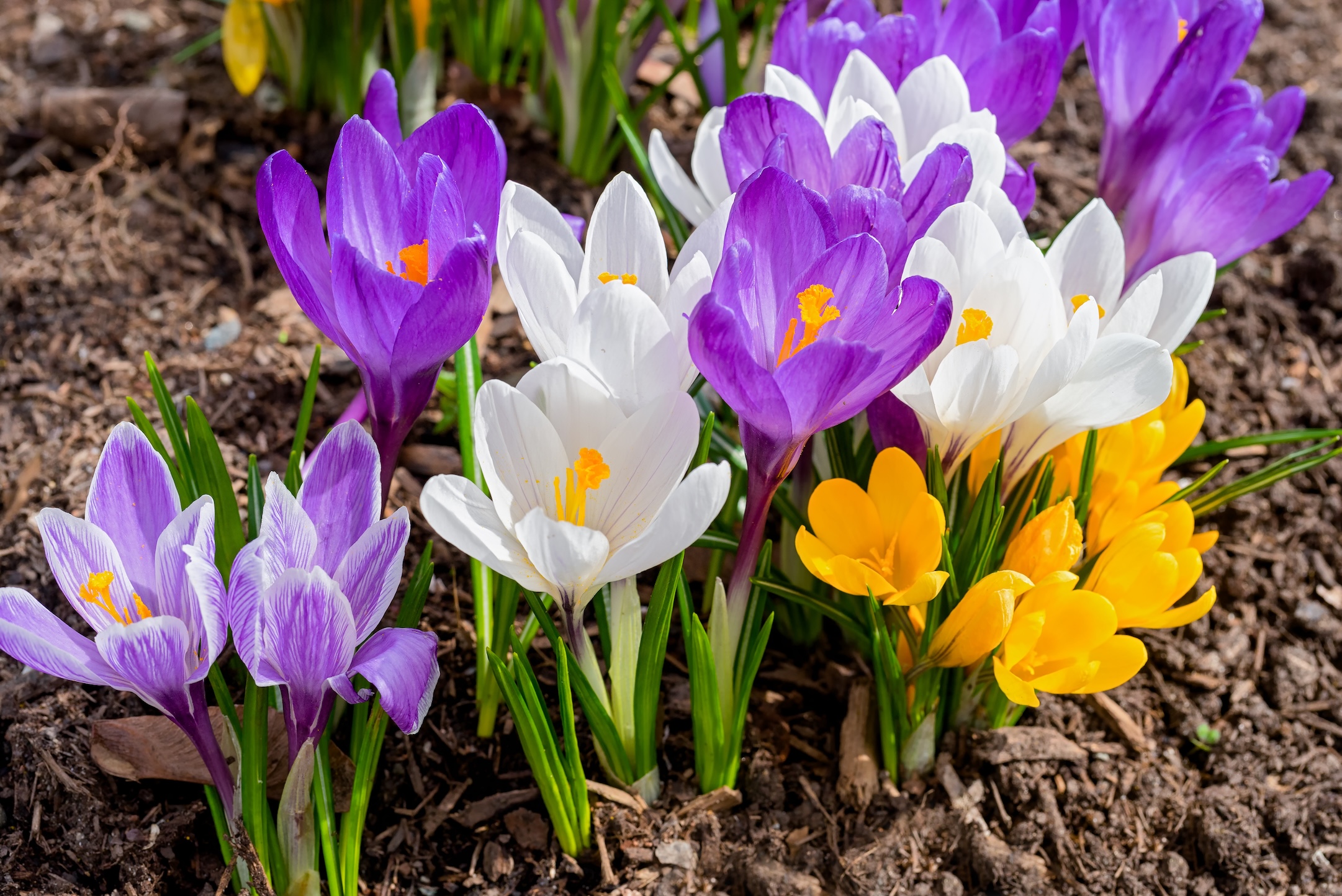Forcing Your Bulbs to Bloom
For those itching to get started on planting their garden, the winter months can start to drag by. However, there are ways that you add pops of color to these cold months right from inside your home. Learn how you can plant and force bulbs, even in the dead of winter.

Did you know it’s possible to coax spring-blooming bulbs into flowering for you in the middle of winter? Nothing will chase away the winter blahs faster than a pot of daffodils or tulips on the windowsill. To add beauty to your spring landscape, try planting an arrangement of bulbs in a container this fall. With proper preparation, you’ll have bright blossoms just as the snow begins to melt.
“Forcing” is the term used to prepare spring bulbs so that they will bloom inside. The best time to begin this process is in October. Popular choices are tulips, crocus, daffodils, or hyacinths. Bulbs bloom at different rates, so don’t mix different types of bulbs in the same container unless you aren’t bothered with fading foliage as the next bulb begins blooming. Purchase clay or plastic pots with adequate drainage. The pots, if not new, should be cleaned thoroughly. You will want to use a good quality potting soil. If desired, mix in a small amount of bulb food or bone meal. Partially fill the base of the pot with soil, and plant the bulbs in the pot, pointed end up. Space the bulbs close together but not touching. Cover with soil, leaving the tip of the bulb exposed and water thoroughly. Do not allow the soil to become dried out, while also being careful to not let it get too soggy.
Give them the cold shoulder
To stimulate flowering, the bulbs need to be kept cold—between 35-48 degrees Fahrenheit for a minimum of 12 weeks. Relocate the planters to an unheated attic or cellar, a garden cold frame, or the crisper section of your refrigerator. A spare refrigerator is great for this purpose, if you’re lucky enough to have one. If using a refrigerator, cover the pots with plastic bags that have had air holes punched in them. Wherever you place them, it is important not to allow the bulbs to freeze. Mark your calendar so you know when it’s time to bring the planters in. Early October plantings should be ready right after the Christmas holidays. To stagger bloom times, bring the planters in at different intervals. On average, you will see the bulbs flower in 3-4 weeks.
After 12 weeks, move the planters indoors and put them in a cool but sunny spot with a temperature lower than 60 degrees. After growth appears, move them to a warmer and brighter spot, such as the living room, but avoid direct sunlight. After flowers begin to bloom, move the pots to a cooler place at night, and the blossom time will be extended. Because forcing takes up a lot of the bulb’s energy, planting them outdoors will not guarantee they’ll bloom again next season. If you’d like to experiment, remove the bulbs from the pot after leaves die back completely, and store them in a dry, cool and dark location to plant next fall.
Outdoor container planting tips
Planting bulbs in outdoor containers for spring blooming is very similar to planting them for indoor forcing. You can mix varieties in a container to extend the blooming time throughout the spring, just be aware of the size and height of each bulb you choose to place in the container. Make sure you find a planter that will handle colder temperatures. A charming wood planter is large enough for you to plant a variety of bulbs, and it will not crack if exposed to winter cold. Choose your container and fill it with a quality potting mix. You will need to plant your bulbs as deeply as they would need to be planted in the ground. For example, in a 15-inch high container, tulips would need to be planted 6 inches deep, crocus 4 inches deep and muscari 3 inches deep. Start with 9 inches of soil and plant your tulips, then add another 2 inches of soil and plant the crocus, then another inch for the grape hyacinth and cover with soil. Follow the planting depth recommended on the package for each bulb you choose. Plant the bulbs close together without the sides touching. Be aware of the bloom time of each variety if you mix bulbs and plan your mix so that the flowers arrive in succession.
Water well and place the planter where it will be cold, but not subjected to a hard freeze. You can also bury the pots in the ground but they need to be planted as deep as the pots, and before the ground freezes, covered with a layer of soil and several inches of mulch. This process will make it difficult to retrieve the pots if there is heavy snowfall. An attached garage, basement or attic is an ideal location. Keep the soil moist throughout winter but don’t allow it to get waterlogged, and don’t water if the pot gets frozen. As foliage emerges into spring, gradually expose the spot to brighter light by inching it toward its final location every day.
Be creative with your outdoor planters. An old wheelbarrow, with drainage holes, makes a portable display that you can wheel from garage to spring for blooming. Old washbasins, discarded garden boots, and even wood crates can be used, as long as drainage is adequate. Because there are so many bulb varieties, container planting is a great way to “audition” the flowers before deciding to plant them in your in-ground landscape.
Other options available for winter months
If the planting and chilling process is too much preparation, there’s an easier way to get blooms in the winter. Fleet Farm offers an assortment of pre-planted bulbs, ready to water and watch bloom. Amaryllis and paperwhites thrive simply by planting them as the package directs. The bulbs of the Amaryllis come in many different dazzling colors and shapes and will brighten any home. Paperwhite narcissus has a heady fragrance that will welcome you home as they bloom.












